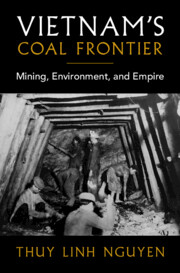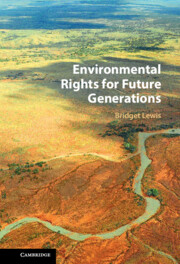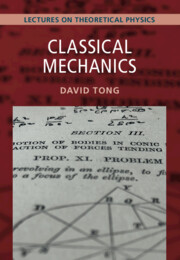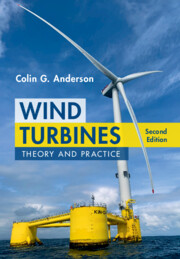Refine search
Actions for selected content:
347 results
EFFECTS OF CARBON PRICING AND OTHER CLIMATE POLICIES ON CO2 EMISSIONS
-
- Journal:
- National Institute Economic Review ,
- Published online by Cambridge University Press:
- 07 November 2025, pp. 1-16
-
- Article
-
- You have access
- Open access
- HTML
- Export citation

Vietnam's Coal Frontier
- Mining, Environment, and Empire
-
- Published online:
- 25 October 2025
- Print publication:
- 13 November 2025
Chapter 2 - An Atlas of Energy Poetics
-
- Book:
- American Modernism and the Cartographic Imagination
- Published online:
- 09 October 2025
- Print publication:
- 23 October 2025, pp 68-110
-
- Chapter
- Export citation

Environmental Rights for Future Generations
-
- Published online:
- 11 October 2025
- Print publication:
- 30 October 2025
Chapter 3 - Fossil Fuels and the Fiction of Extraction
- from Part I - Origins
-
-
- Book:
- Commodities and Literature
- Published online:
- 14 October 2025
- Print publication:
- 09 October 2025, pp 61-75
-
- Chapter
- Export citation

Classical Mechanics
- Lectures on Theoretical Physics
-
- Published online:
- 26 June 2025
- Print publication:
- 19 June 2025
-
- Textbook
- Export citation
2 - Forces
-
- Book:
- Classical Mechanics
- Published online:
- 26 June 2025
- Print publication:
- 19 June 2025, pp 16-64
-
- Chapter
- Export citation
10 - Minerals and Energy
- from Part III - Application to Environmental Sustainability
-
- Book:
- Economics for a Sustainable World
- Published online:
- 14 July 2025
- Print publication:
- 12 June 2025, pp 292-317
-
- Chapter
- Export citation
2 - Standing Further Back
-
- Book:
- A Climate of Truth
- Published online:
- 27 March 2025
- Print publication:
- 27 March 2025, pp 21-36
-
- Chapter
- Export citation
3 - The Outer Layer of the Polycrisis
-
- Book:
- A Climate of Truth
- Published online:
- 27 March 2025
- Print publication:
- 27 March 2025, pp 37-90
-
- Chapter
- Export citation
Energy and Nutrient Evaluation of Foods Served in Turkish Red Crescent Field Kitchens after the Kahramanmaraş Earthquake
-
- Journal:
- Disaster Medicine and Public Health Preparedness / Volume 19 / 2025
- Published online by Cambridge University Press:
- 17 March 2025, e58
-
- Article
- Export citation
The March 2015 Bombings of Yunnan and the Decline in Sino-Myanmar Relations 2015
-
- Journal:
- Asia-Pacific Journal / Volume 13 / Issue 14 / April 2015
- Published online by Cambridge University Press:
- 14 March 2025, e1
-
- Article
-
- You have access
- Open access
- Export citation
Case Study 2.2 - State Grid’s Localization Strategies in Belo Monte, Brazil
- from Section 2 - Compliance
-
-
- Book:
- A Casebook on Chinese Outbound Investment
- Published online:
- 28 February 2025
- Print publication:
- 06 March 2025, pp 88-112
-
- Chapter
-
- You have access
- Open access
- HTML
- Export citation
Britain’s First Net Zero: Turning the Lights On and the Railways Off 1953–73
-
- Journal:
- Enterprise & Society , First View
- Published online by Cambridge University Press:
- 04 March 2025, pp. 1-29
-
- Article
-
- You have access
- Open access
- HTML
- Export citation
Capitalism, complexity, and polycrisis: toward neo-Gramscian polycrisis analysis
- Part of
-
- Journal:
- Global Sustainability / Volume 8 / 2025
- Published online by Cambridge University Press:
- 18 February 2025, e7
-
- Article
-
- You have access
- Open access
- HTML
- Export citation
Chapter Three - 2022
-
- Book:
- World Builders
- Published online:
- 13 February 2025
- Print publication:
- 13 February 2025, pp 120-164
-
- Chapter
- Export citation

Wind Turbines
- Theory and Practice
-
- Published online:
- 24 January 2025
- Print publication:
- 19 December 2024
-
- Textbook
- Export citation
Chapter 19 - Energy Physics
- from Part IV - Nature, Science, and the Environment
-
-
- Book:
- Gerard Manley Hopkins in Context
- Published online:
- 16 January 2025
- Print publication:
- 16 January 2025, pp 165-173
-
- Chapter
- Export citation
Chapter 38 - The Anthropocene
- from Part VII - Reception and Influence
-
-
- Book:
- Gerard Manley Hopkins in Context
- Published online:
- 16 January 2025
- Print publication:
- 16 January 2025, pp 326-333
-
- Chapter
- Export citation
The UK Ministry of Defence and the transition to ‘low-carbon warfare’: A multilevel perspective on military change
-
- Journal:
- European Journal of International Security / Volume 10 / Issue 3 / August 2025
- Published online by Cambridge University Press:
- 23 December 2024, pp. 374-393
-
- Article
-
- You have access
- Open access
- HTML
- Export citation
